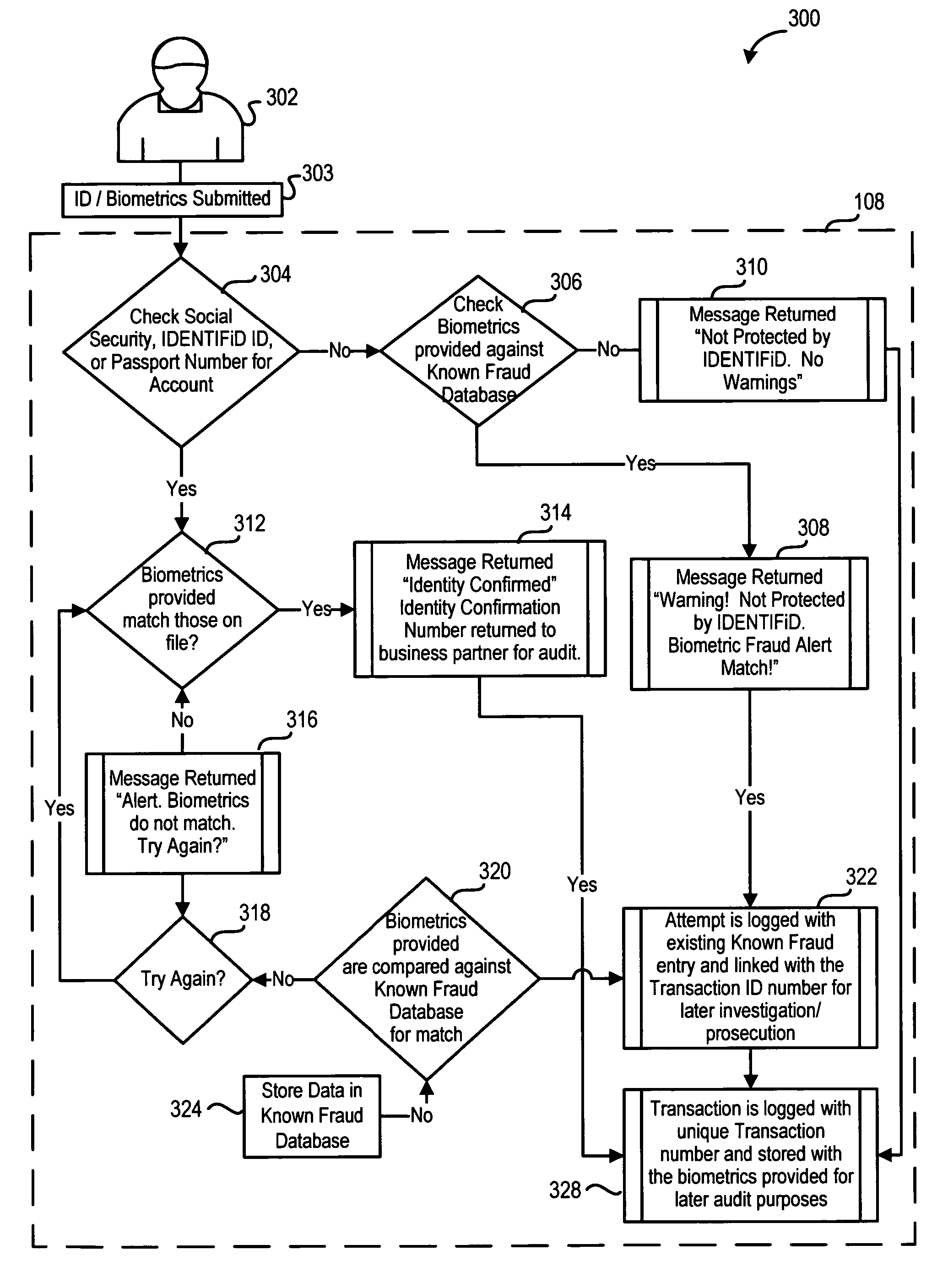Identity verification system
a verification system and identity technology, applied in the field of electronic systems, can solve the problems of a large percentage of identity theft that is not reported to the ftc, a high-payoff for the offender, and a low chance of being caught and prosecuted, so as to facilitate the acquisition of data
- Summary
- Abstract
- Description
- Claims
- Application Information
AI Technical Summary
Benefits of technology
Problems solved by technology
Method used
Image
Examples
Embodiment Construction
[0047]There will now be shown and described an electronic system that functions as an identity confirmation agent.
[0048]FIG. 1 shows an identity confirmation system 100 that permits a plurality of business partners to interact with an identity confirmation agent 108. Each of the business partners may use the identity confirmation agent 108 to confirm the identity of customers, such as customer 110, 112, 114 of business partner 102. Service partners 116, 118, 120 may be third party vendors who provide software, such as transactional software to the business partners 102, 104, 106. Communications as shown are via the Internet, but this may be any other manner of telecommunications. It is apparent from FIG. 1, although this is only one embodiment, that the business partners may use the identity confirmation agent at a central remote location to confirm or deny the identity of customers 112, 114, 116. This confirmation or denial may be in context of a financial transaction, a purchase, ...
PUM
 Login to View More
Login to View More Abstract
Description
Claims
Application Information
 Login to View More
Login to View More - R&D
- Intellectual Property
- Life Sciences
- Materials
- Tech Scout
- Unparalleled Data Quality
- Higher Quality Content
- 60% Fewer Hallucinations
Browse by: Latest US Patents, China's latest patents, Technical Efficacy Thesaurus, Application Domain, Technology Topic, Popular Technical Reports.
© 2025 PatSnap. All rights reserved.Legal|Privacy policy|Modern Slavery Act Transparency Statement|Sitemap|About US| Contact US: help@patsnap.com



